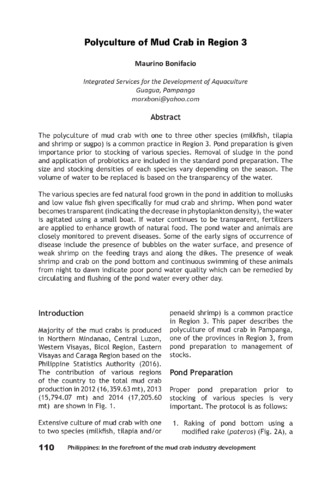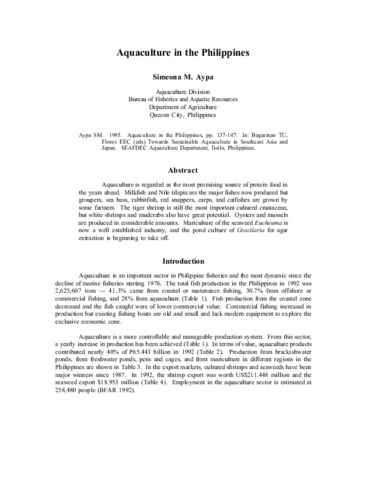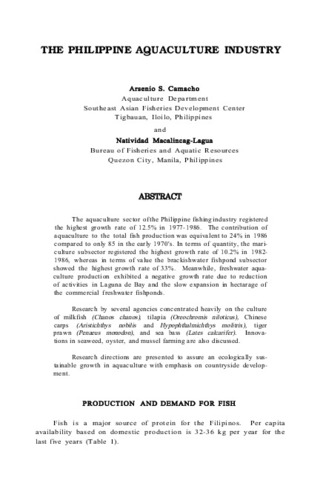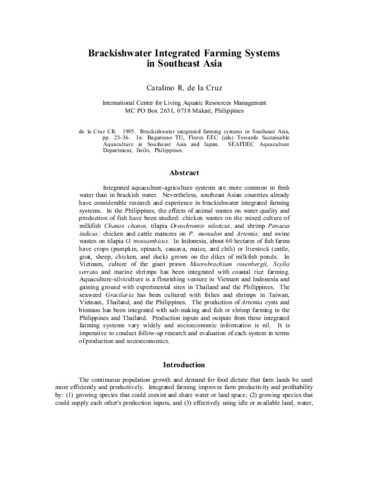Polyculture of mud crab in Region 3
Share
Abstract
The polyculture of mud crab with one to three other species (milkfish (Chanos chanos), tilapia (Oreochromis spp.) and shrimp or sugpo (Penaeus monodon)) is a common practice in Region 3. Pond preparation is given importance prior to stocking of various species. Removal of sludge in the pond and application of probiotics are included in the standard pond preparation. The size and stocking densities of each species vary depending on the season. The volume of water to be replaced is based on the transparency of the water.
The various species are fed natural food grown in the pond in addition to mollusks and low value fish given specifically for mud crab and shrimp. When pond water becomes transparent (indicating the decrease in phytoplankton density), the water is agitated using a small boat. If water continues to be transparent, fertilizers are applied to enhance growth of natural food. The pond water and animals are closely monitored to prevent diseases. Some of the early signs of occurrence of disease include the presence of bubbles on the water surface, and presence of weak shrimp on the feeding trays and along the dikes. The presence of weak shrimp and crab on the pond bottom and continuous swimming of these animals from night to dawn indicate poor pond water quality which can be remedied by circulating and flushing of the pond water every other day.
Suggested Citation
Bonifacio, M. (2017). Polyculture of mud crab in Region 3. In E. T. Quinitio, F. D. Parado-Estepa, & R. M. Coloso (Eds.), Philippines : In the forefront of the mud crab industry development : proceedings of the 1st National Mud Crab Congress, 16-18 November 2015, Iloilo City, Philippines (pp. 110-114). Tigbauan, Iloilo, Philippines: Aquaculture Department, Southeast Asian Fisheries Development Center.
Subject
Taxonomic term
Related items
Showing items related by title, author, creator and subject.
-
Aquaculture in the Philippines
Aypa, Simeona M. (Aquaculture Department, Southeast Asian Fisheries Development Center, 1995)Aquaculture is regarded as the most promising source of protein food in the years ahead. Milkfish and Nile tilapia are the major fishes now produced but groupers, sea bass, rabbitfish, red snappers, carps, and catfishes ... -
The Philippine aquaculture industry
Camacho, Arsenio S.; Macalincag-Lagua, Natividad (Aquaculture Department, Southeast Asian Fisheries Development Center, 1988)The aquaculture sector of the Philippine fishing industry registered the highest growth rate of 12.5% in 1977-1986. The contribution of aquaculture to the total fish production was equivalent to 24% in 1986 compared to ... -
Brackishwater integrated farming systems in Southeast Asia
De la Cruz, Catalino R. (Aquaculture Department, Southeast Asian Fisheries Development Center, 1995)Integrated aquaculture-agriculture systems are more common in fresh water than in brackish water. Nevertheless, southeast Asian countries already have considerable research and experience in brackishwater integrated farming ...




